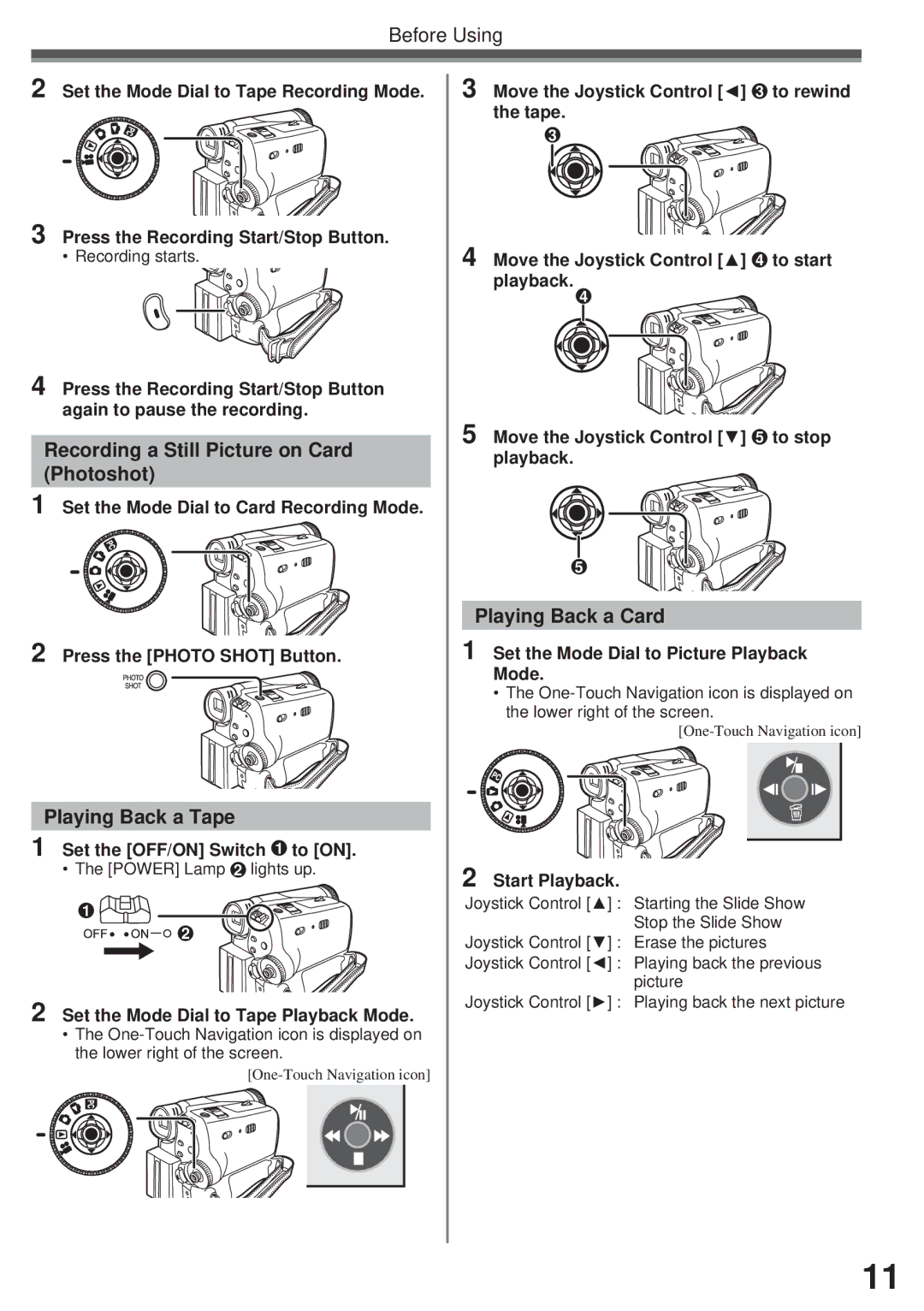PV-GS19, PV-GS31, PV-GS35 specifications
The Panasonic PV-GS35, PV-GS31, and PV-GS19 are compact and versatile camcorders from the renowned Panasonic brand, designed to cater to the needs of budding videographers and seasoned enthusiasts alike. These camcorders are known for their portability, ease of use, and impressive features that enhance video quality and functionality.The PV-GS35, the flagship model, boasts a 3 CCD image sensor system that offers superior color accuracy and better low-light performance. With a 12x optical zoom lens, users can capture distant subjects without sacrificing clarity. This camcorder supports a 21x digital zoom, expanding its capture capabilities. Additionally, it features a 2.5-inch LCD screen that tilts out for flexible shooting angles, allowing users to frame their shots with ease. The PV-GS35 also includes a digital image stabilizer that compensates for shaky hands, ensuring smooth and stable footage.
The PV-GS31 is a mid-range option that retains many of the robust features found in the GS35 but at a more affordable price. It also incorporates a 3 CCD system, ensuring vivid color reproduction and high-resolution video quality. The GS31 comes with a 10x optical zoom lens complemented by a 200x digital zoom feature, making it ideal for capturing both broad scenes and fine details. Its compact design makes it an excellent choice for on-the-go filming, and the convenient easy mode simplifies settings, making it accessible for novice users.
The Panasonic PV-GS19 is geared toward users who prioritize simplicity and portability while still seeking quality footage. Featuring a single CCD sensor, it doesn't reach the high-end capabilities of its counterparts but offers decent performance for casual shooting. The GS19 sports a 20x optical zoom and a digital zoom feature, perfect for capturing family moments and everyday activities. Its lightweight and compact design makes it an ideal choice for travel.
All three models are equipped with intelligent features such as face detection, various scene modes, and a built-in microphone. These camcorders utilize Panasonic's advanced optical technologies, enriching the overall shooting experience.
In conclusion, the Panasonic PV-GS35, PV-GS31, and PV-GS19 camcorders cater to varying levels of videography expertise and preferences, each providing distinctive features and technologies that allow users to capture memorable moments with remarkable quality. Whether for professional endeavors or less serious applications, these camcorders represent a versatile range of solutions tailored for diverse filming needs.

